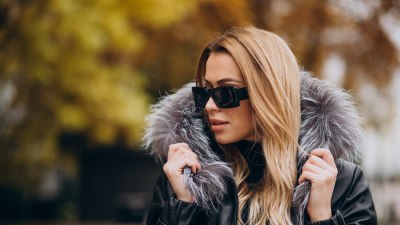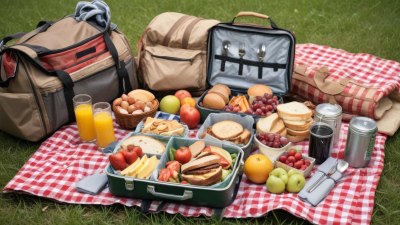The Real Reason Clouds Can’t Decide If They Want to Stay or Leave
Explore the fascinating dynamics of clouds and their unpredictable nature in the atmosphere.

This image was created with the assistance of Freepik
Clouds are an integral part of our atmosphere, forming and dissipating in a mesmerizing dance that can leave one wondering about their true purpose and behavior. The real reason clouds can't decide whether to stay or leave involves a complex interplay of atmospheric conditions, temperature, humidity, and several other meteorological factors. Understanding these elements can provide insight into the transient nature of clouds and their effects on the weather we experience.
The Formation of Clouds
To comprehend why clouds behave this way, it's essential to first understand how they form. Clouds begin as water vapor in the air that cools and condenses into tiny water droplets or ice crystals. This process typically occurs when warm air rises, expands, and cools in the atmosphere. As the rising air cools, it reaches a point known as the dew point, where water vapor condenses into cloud droplets. If the atmosphere does not possess the right conditions for maintaining these droplets, the clouds will either dissipate or transform into precipitation.
Types of Clouds
Clouds are classified into various types according to their appearance, altitude, and the processes involved in their formation. Some of the primary types include cumulus, stratus, cirrus, and nimbus clouds. Each cloud type has distinct features that contribute to how long they might linger in the sky. For example, cumulus clouds are puffy and white, indicating fair weather, while stratus clouds are gray and often blanket the sky, suggesting overcast weather. The stability or instability of the surrounding atmosphere plays a critical role in whether these clouds will persist or fade away.
Atmospheric Stability
The concept of atmospheric stability is crucial to understanding cloud behavior. When the atmosphere is stable, the air presents little vertical movement, which may lead to the persistence of clouds in the sky. Conversely, if the atmosphere is unstable, it encourages vertical air movement, which can lead to cloud formation and dissipation. This variability explains why clouds sometimes seem to appear suddenly and then disappear just as quickly. The balance between warmth and moisture influences this stability significantly.
Humidity and Temperature Variations
Humidity levels in the atmosphere play a vital role in cloud dynamics. When the air is saturated, you are much more likely to see clouds forming and retaining their structure. On the other hand, if surrounding air is dry, clouds can evaporate, resulting in a disappearing act. Temperature variations also impact cloud survival; warmer air can hold more moisture than cooler air, meaning that clouds formed in warmer conditions may linger longer in cooler areas if they can maintain their moisture content.
The Role of Wind
Wind is another crucial factor affecting cloud behavior. Vertical winds can uplift the moisture-laden air, thus aiding in the formation of clouds, while horizontal winds can disperse the clouds or push them into a different area. When winds blow strongly, they can either stretch clouds out, causing them to dissipate, or help form new clouds by supplying moisture. Consequently, the interplay of these winds alters the landscape of the sky, making clouds appear and vanish according to the prevailing conditions.
Precipitation Processes
Clouds’ decision to leave or stay also hinges on precipitation processes. When a cloud accumulates enough moisture and the droplets coalesce, they may fall as rain, snow, or other forms of precipitation. This process affects the cloud's lifespan. Once it releases its moisture, it often disperses, illustrating the transient nature of its existence. However, if conditions create a cycle where clouds can refill with moisture after precipitation, they might linger around longer.
The Influence of Geography
Geographical elements like mountains, valleys, and bodies of water can significantly affect cloud dynamics. Mountains can force air upwards, leading to cloud formation on the windward side, while the leeward side may experience clear skies. Thus, clouds may seem indecisive if fluctuating geographical conditions cause them to form and dissipate multiple times over a relatively short period. Coastal regions also see unique cloud formations due to the interaction between oceanic moisture and atmospheric shifts.
Climate Change Impacts
As the climate changes, so do cloud behaviors. Rising global temperatures may increase the amount of water vapor in the atmosphere, influencing cloud formation and stability. Some climate models predict that certain cloud types will become more prevalent, potentially impacting weather patterns and climate systems. Understanding these shifts is crucial in predicting future weather phenomena and comprehending the role clouds play in our changing environment.
In summary, clouds exhibit an indecisive nature due to numerous interacting factors, including atmospheric stability, humidity, temperature, wind patterns, geographical influences, and precipitation processes. While their transient existence can be fascinating to observe, it is essential to recognize that this behavior is a product of intricate meteorological dynamics. By studying these influences, we can gain deeper insights into cloud behavior, improve weather predictions, and better appreciate the wonders of our atmosphere.











